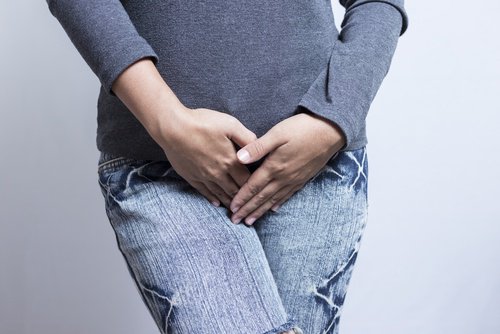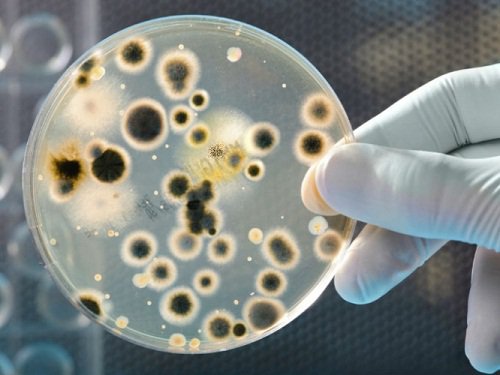Vaginal Irritation Causes and Natural Treatment

One of the most common problems that women at all stages of life can encounter is vaginal irritation. It’s a very annoying symptom that can be accompanied by odor, redness, and pain, depending on the cause.
The vaginal area is normally protected by microbial flora that helps to maintain a moisture balance and eliminates harmful bacteria that cause infections.
Alteration of that flora can lead to irritation and a variety of other conditions that can be very uncomfortable.
There are several triggers for these intimate, often embarrassing, problems for women. Fortunately, there are also many treatment options that will help alleviate them naturally. This can help to stop them becoming more serious conditions.
What are the causes of vaginal irritation?
The skin of your vulva and vagina is more sensitive and vulnerable than other parts of your body. Because of this, it has a higher risk of developing several different conditions. Irritation can be caused by an infection or altered pH in the vagina. In addition to that, it may be an allergy to something you’re using, such as chemical hygiene products or latex condoms.
See also: 5 causes of vaginal itching
Bacterial vaginosis

Candida albicans
Yeast infections are another common culprit, caused by a fungus known as Candida albicans. When this strain of yeast grows unchecked in the vagina it creates a thick, whitish discharge that’s characterized by a strong, bread-like smell.
In most cases it causes irritation both inside and outside of the vaginal area, accompanied by a nagging feeling of itching or burning.
Sexually transmitted diseases
One of the common warning signs of a sexually transmitted disease (STD) is vaginal irritation. While it’s less common to find that this is the cause of your symptoms, it’s best to consult your doctor just in case.
Menopause
During menopause you undergo a series of hormonal changes that directly affect the vaginal region by altering your body’s natural pH and causing dryness.
In this case medical treatment is needed to find a way to balance your hormones, prevent irritation, and reduce your risk of infection.
Allergies
The use of products containing chemicals that trigger allergic reactions is a very common cause of vaginal irritation. These can be found in items such as:
- Scented toilet paper
- Soaps and detergents
- Intimate deodorant products
- Dryer sheets
- Scented wet wipes
- Tampons and pads
Natural remedies for vaginal irritation
If the cause is an infection or an STD, then it’s important that you talk with your doctor. He will help you get an accurate diagnosis before proceeding with any kind of treatment.
In general, however, there are a number of home remedies that can be helpful in relieving your symptoms, and also restoring the natural balance of this sensitive area.
Arnica

- SImply make a tea from the leaves or the extract of this plant and apply it to the external area.
Calendula
Calendula is one of the best remedies for alleviating problems associated with the vaginal region. It has antibiotic effects that can prevent and fight infections, which is helpful in relieving pain and inflammation.
How should you use it?
- Like arnica, make a tea and use the liquid as an external rinse.
Witch hazel
The ability of this plant to fight inflammation helps reduce itching and burning in the vaginal region while also fighting any infection.
How should you use it?
- Moisten a cotton pad or cloth with witch hazel water and apply it to the affected areas.
Yogurt with probiotics
Eating plain yogurt with probiotics is one of the best ways to soothe irritation. Additionally, you can even apply it directly to the vaginal area for relief.
The healthy bacteria cultures in yogurt reduce harmful bacteria and restore the natural pH of the vagina.
We recommend reading: At-home test for candida
Some things to remember…
While many people still feel embarrassed dealing with this intimate area, it’s important to talk to your doctor when you experience this type of discomfort. Your vagina is a very delicate area, and any problems need to be addressed in a timely manner in order to prevent the development of diseases or more severe symptoms.
All cited sources were thoroughly reviewed by our team to ensure their quality, reliability, currency, and validity. The bibliography of this article was considered reliable and of academic or scientific accuracy.
- Falagas, M. E., Betsi, G. I., & Athanasiou, S. (2006). Probiotics for prevention of recurrent vulvovaginal candidiasis: A review. Journal of Antimicrobial Chemotherapy. https://doi.org/10.1093/jac/dkl246
- Eckert, L. O. (2006). Acute Vulvovaginitis. New England Journal of Medicine. https://doi.org/10.1056/NEJMcp053720
- Facts about vaginitis and vaginal infections. (n.d.).
idph.state.il.us/about/womenshealth/factsheets/vag.htm - Fungal diseases: Vaginal candidiasis. (2018).
cdc.gov/fungal/diseases/candidiasis/genital/
This text is provided for informational purposes only and does not replace consultation with a professional. If in doubt, consult your specialist.








